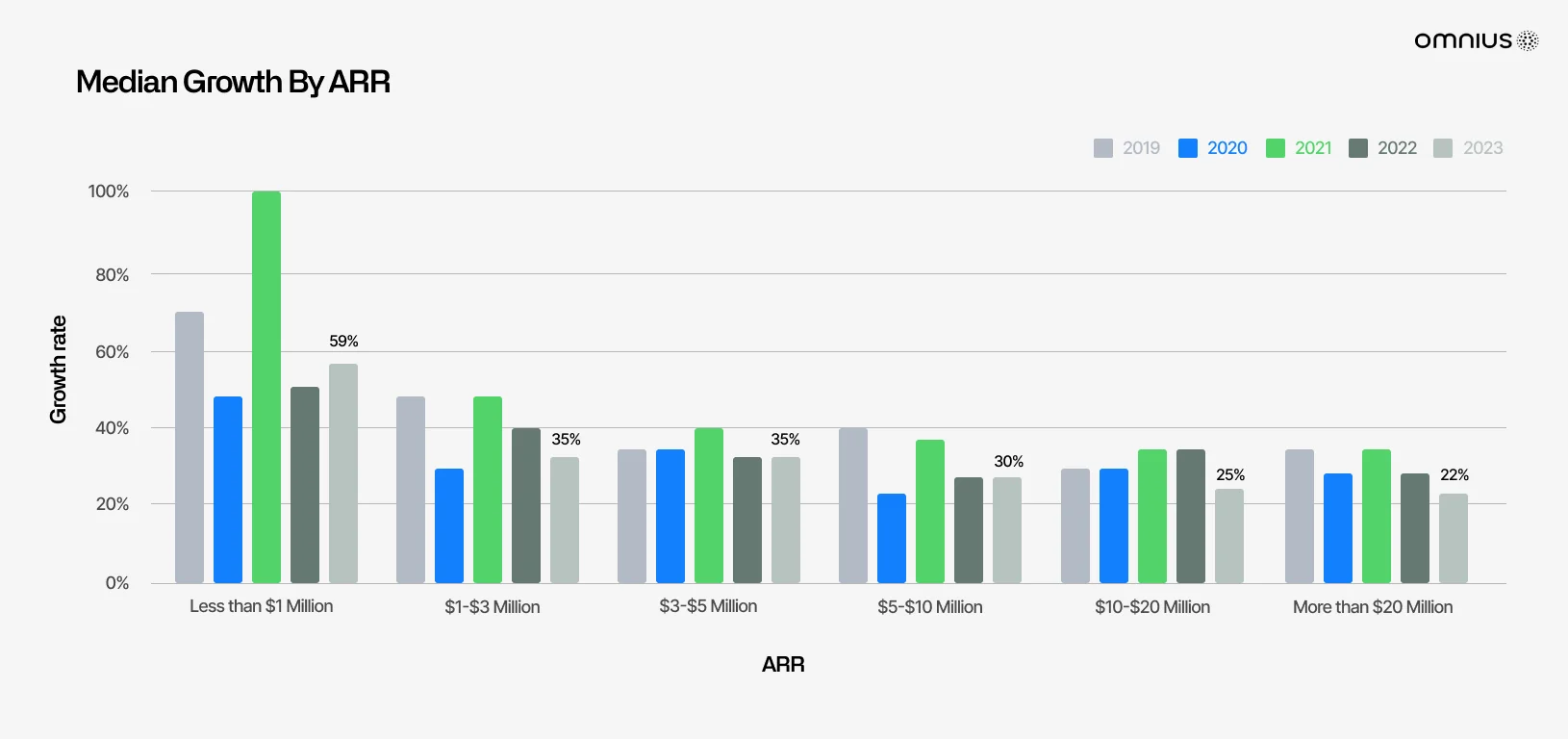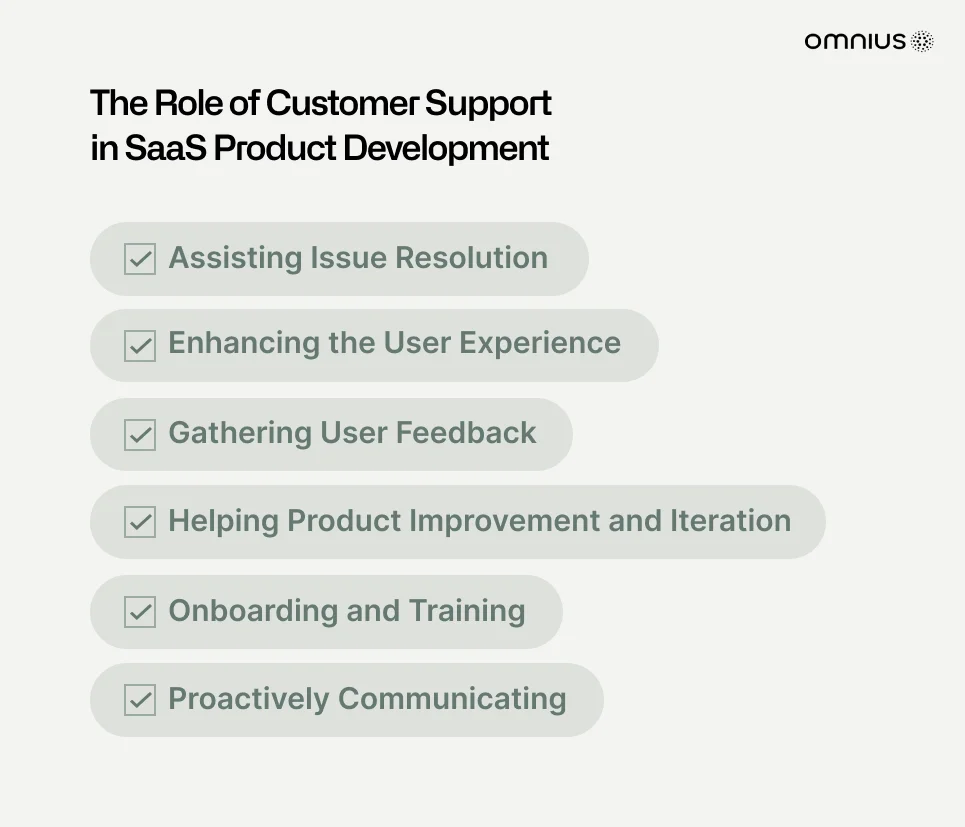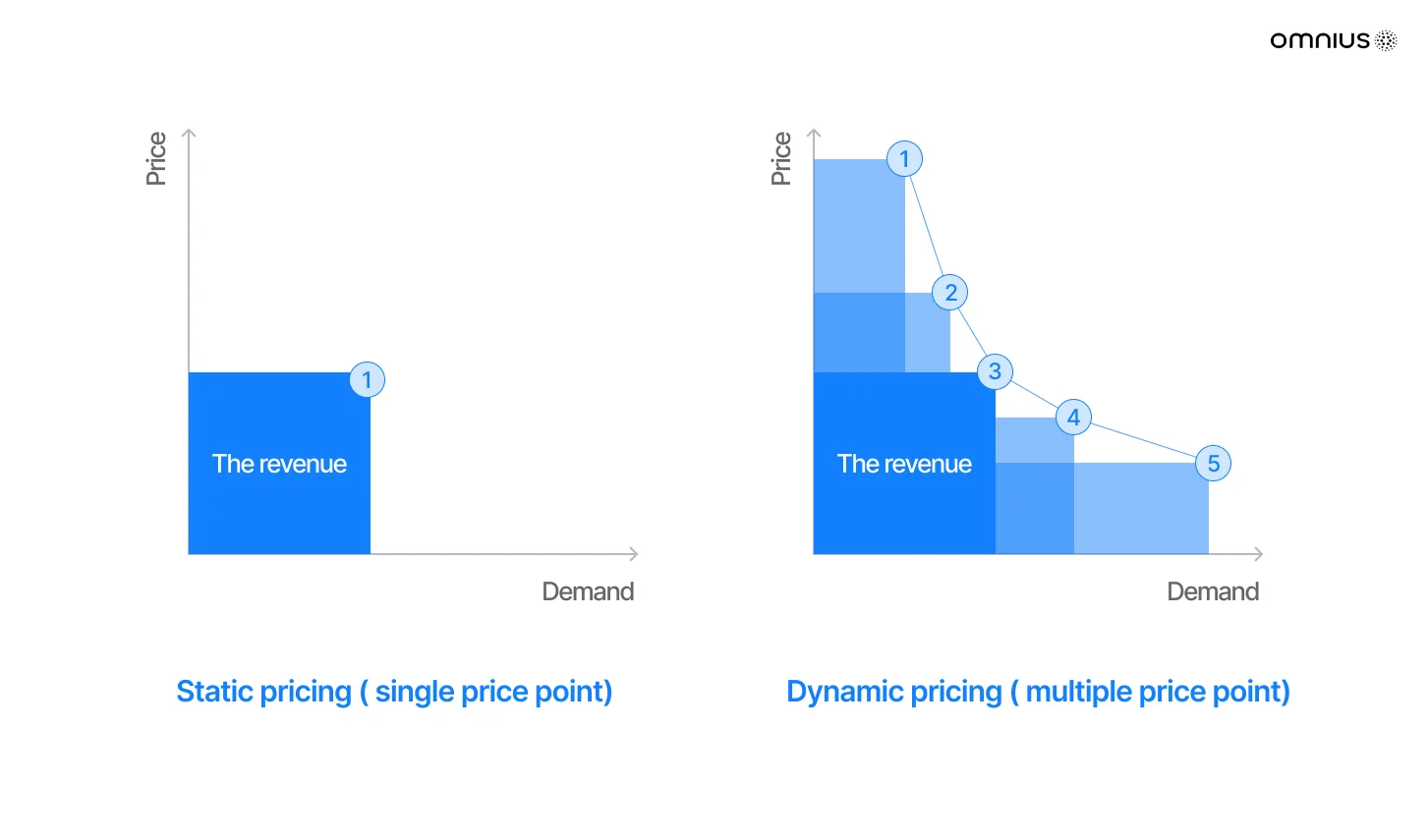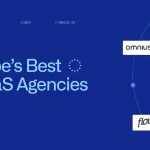Did you know that SaaS companies with annual revenue between $1 and $5 million usually see yearly growth of 52% to 59%, while the top performers achieve growth between 102% and 154%?
These impressive figures highlight the potential for significant growth in the SaaS industry.
However, many businesses struggle to maintain or increase their ARR due to ineffective customer retention strategies or a lack of understanding of growth levers.
In an industry with high customer expectations, achieving consistent ARR growth can be overwhelming, yet it is crucial for long-term success.
In this article, we will explain ARR growth and how you can increase it to ensure enduring development and stability for your SaaS business.
Let’s start!
What is the ARR Growth Rate?
The ARR growth rate shows how much a company’s Annual Recurring Revenue grows over a specific period. It’s a key indicator of a company’s ability to expand revenue.

A high ARR growth rateshows strong performance in attracting new customers, keeping existing ones, and increasing sales to current customers.
This reflects the business’s overall health and potential to scale.
How is ARR Growth Calculated?
To calculate ARR growth as a percentage, follow these steps:
- Subtract the previous ARR from the current ARR.
- Divide the result by the previous ARR.
- Multiply by 100 to get the percentage.
So, the formula for calculating your ARR growth is:

For example, If a company had a previous ARR of $2 million and a current ARR of $2.8 million, the ARR growth would be calculated as follows: (2.8-2)/2×100=40%.
Why is it Important to Track Your ARR Growth?
Tracking the ARR growth rate provides valuable insights into customer renewals, upgrades, and overall revenue trends, helping you make informed decisions.

Here are some benefits of tracking ARR growth:
- Guides strategic decisions – Knowing your growth rate helps you plan to expand your customer base and boost revenue effectively.
- Reflects customer satisfaction – A healthy ARR growth rate indicates that your product meets customer needs and that they’re likely to renew or upgrade.
- Attracts higher valuations – ARR growth rate is a strong indicator of a SaaS company’s valuation, especially in the early stages, with high-growth companies attracting higher multiples.
- Improves customer retention and expansion – Understanding growth patterns allows you to focus on keeping existing customers happy while identifying expansion opportunities, helping reduce churn, and sustaining growth.
The Limitations of ARR for SaaS
While ARR is a valuable metric that SaaS businesses and investors rely on, it has some limitations.
ARR focuses on financial growth but doesn’t reflect operational efficiency or overall business health.
For example, subscription cancellations may hint at retention challenges but don’t fully explain the root causes.
To truly understand your business’s performance, it is essential to examine other metrics, such as customer churn rate, expansion revenue, or customer acquisition cost (CAC).
A closer analysis of these metrics can help pinpoint specific areas needing improvement.
What is a Good ARR for SaaS?
In the SaaS world, no single “ideal” ARR fits every business.
However, some general benchmarks can help guide expectations.
A solid ARR target for an early-stage subscription company is around $1 million.
As companies reach mid-stage, reaching an ARR of $5 million or more is a good milestone.

Keep in mind, though, that these are just rough guidelines and can vary depending on each business’s specifics.
To exceed these benchmarks, focus on the following:
- Prioritize customer satisfaction, retention, and upselling.
- Invest in product innovation.
- Expand into new markets and optimize pricing strategies.
- Diversify product offerings to meet different customer needs.
- Strengthen marketing efforts for broader reach.
- Build strategic partnerships to support growth and expansion.
- Continuously analyze market trends and adapt strategies.
- Gather and act on customer feedback to stay competitive and ensure sustained growth.
How to Increase SaaS ARR Growth: 5 Core Strategies for Long-Term Impact
1. Prioritize Customer Retention
Retaining customers is essential to grow ARR for a SaaS business. Your revenue base can only expand if you consistently retain current customers.
This involves continuously engaging customers and ensuring they’re satisfied with your product. Here are some strategies to boost retention and minimize churn:
Deliver Outstanding Customer Support
Since 81% of customers are willing to pay more for better customer service, customer support should be a top priority.
Ensure you have a dedicated team focused on providing an exceptional service experience.

Your support team should respond quickly to customer inquiries.
If 24/7 support isn’t feasible, set clear expectations on response times so customers know when to expect help.
Customize Your Customer Success Support
Your customer success team is there to help users reach their goals with your SaaS product, and the best way to do this is by offering personalized support.
In fact, 64% of customers expect companies to respond and interact with them in real time.
While general resources like a knowledge base, tutorials, and parts of the onboarding process are helpful for everyone, it takes time to understand each customer’s unique needs.
Focus on tailoring your assistance to meet those needs as they continue using your product.
Continuously Improve Your SaaS Product
It’s essential to keep innovating and evolving your SaaS product to drive growth in annual recurring revenue (ARR).
Regular updates, new features, and improvements to existing functionalities can help you stay ahead of the competition, retain current users, and attract new customers.
Keep an eye on industry trends and news relevant to your product.

This will give you insight into where the market is headed and what changes might be needed.
Equally important, listen to customer feedback—it’s valuable information for understanding what aspects of your SaaS solution can be improved to better meet user needs.
2. Create a Strong Upsell Strategy
Growing your ARR depends not only on new sales but also on expanding revenue from existing customers.
This expansion revenue increase can help you raise your ARR and boost your average revenue per user (ARPU), helping you build sustainable growth.

A recent survey shows that upselling can lead to an average revenue increase of 10-30%.
For this reason, developing an effective upsell strategy is vital for any SaaS company.
Here are some tips to get started:
Upsell Based on User Engagement
Start by analyzing how your users engage with your product.
Use analytics tools to find customers who actively use the most features or are close to reaching their current plan’s limits.
These users may benefit from an upgrade to meet their growing needs.
Identifying users who would gain more value from a higher tier allows you to offer tailored upsell options that are relevant and appealing to each customer.
Offer Temporary Free Upgrades
One effective way to encourage upgrades is by letting customers experience the benefits firsthand.
Try offering a temporary free upgrade, allowing users to explore additional features and see the value they provide.

This approach showcases the enhanced functionality and can decide to upgrade much more easily.
Just be sure to set a clear deadline for the offer to create a sense of urgency and prompt timely action.
Make Upgrading Simple and Self-Serve
An easy, self-serve upgrade process is essential to keep customers engaged and motivated to upgrade.
Customers may lose interest if switching plans involves too much back-and-forth with your team.
To avoid this, provide a straightforward subscription management interface where users can easily upgrade their plans independently.
A smooth, self-service portal allows customers to upgrade easily and boosts satisfaction by eliminating the need to wait for support.
3. Refine Your Pricing Strategy
Optimizing your pricing is a powerful way to drive ARR growth.
This involves finding the ideal price point and selecting a pricing model that reflects the true value of your SaaS product.
A value-based pricing strategy works well for SaaS businesses—it aligns your prices with what customers perceive as valuable.

To develop this, analyze how much users are willing to pay for specific features while also considering market trends, competitor pricing, and customer feedback.
The goal is to strike a balance: set a competitive price that attracts customers while maximizing profitability.
This approach ensures your pricing remains appealing without undervaluing your product.
Optimizing your pricing strategy boosts ARR growth by matching prices to the value customers get.
This approach also lets you create pricing tiers that fit the needs of different customer groups, making your offerings more attractive and profitable.

For example, suppose a software company offers three pricing tiers: Starter, Professional, and Enterprise:
- For the Starter tier (small businesses), they prioritize automated onboarding and email support.
- For Professional (mid-sized businesses), they add phone support and advanced features.
- For Enterprise (large businesses), they offer personalized demos, a dedicated account manager, and custom pricing options.
By tailoring your pricing and support to each segment, you align Annual contract value with specific customer needs and drive more targeted revenue growth.
4. Invest in Sales & Marketing
Did you know that one in four companies reports that their sales and marketing teams are “misaligned” or “rarely aligned?”
New revenue is key to growing your ARR, so investing in sales and marketing is essential.
A strong sales and marketing team can reach potential customers, convert leads, and drive purchases for your SaaS product.
To do this effectively, start with market research, build buyer personas, and tailor messaging to different audience segments.

Beyond that, focus on building brand awareness, earning trust with your target audience, and nurturing leads until they’re ready to buy.
Use content marketing, SEO, social media, email campaigns, and other inbound strategies to boost visibility and ensure your product reaches the right audience.
5. Expand Your Ideal Customer Profile
Expanding your Ideal Customer Profile (ICP) is a powerful way to increase ARR by reaching a wider audience and tapping into new revenue streams.
By widening your ICP, you can connect with customers who have similar needs but may not yet be fully served, unlocking fresh revenue opportunities without major changes to your product.
This strategy also makes your customer base more diverse and your revenue streams more stable, setting your business up for steady, long-term growth.
Here are some tips on how to expand your ICP:
- Conduct market research to identify new, untapped niches
- Analyze customer feedback to spot emerging needs
- Align efforts across sales, marketing, and product teams to refine targeting

For example, a SaaS provider initially focused on small businesses expanded its ICP to include mid-sized companies, resulting in a 40% ARR increase within six months.
By regularly evaluating and fine-tuning its ICP, the company positioned itself for consistent growth and sustainable revenue gains.
Common Mistakes While Calculating ARR
Here are some common mistakes to avoid when calculating Annual Recurring Revenue:
❌ Not accounting for customer churn: Lost customers mean lost revenue. If churn isn’t factored into ARR, you could have an overly positive view of future revenue.
❌ Overlooking subscription changes: Customers often change their plans by upgrading or downgrading, and these shifts should be included in ARR. Ignoring them can cause major miscalculations.
❌ Including one-time charges: One-time fees and discounts shouldn’t be counted in ARR, as they don’t reflect ongoing revenue. Including them can inflate or deflate ARR in misleading ways.
❌ Incorrect renewal rate assumptions: Accurate ARR relies on understanding customer renewal patterns. Misjudging these rates can lead to significant forecasting errors.
❌ Not updating ARR regularly: ARR isn’t a one-time calculation; it should be updated often to reflect customer changes and market shifts. Otherwise, ARR figures can quickly become outdated and unreliable.
Conclusion
Now that you know what ARR growth for SaaS is and how to increase it, you’re ready to turn steady revenue into impressive growth.
You can start seeing real results by focusing on key strategies like keeping your customers happy, finding the best pricing, and exploring upsell opportunities.
Remember, ARR growth isn’t just about signing up new customers; it’s about getting the most out of every relationship.
If you’re seeking guidance, Omnius is here to help you.
Schedule a 30 minute call with our experts to discover personalized strategies to help take your SaaS business to the next level.
Nguồn: omnius.so










